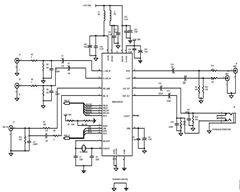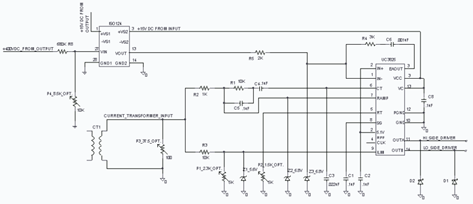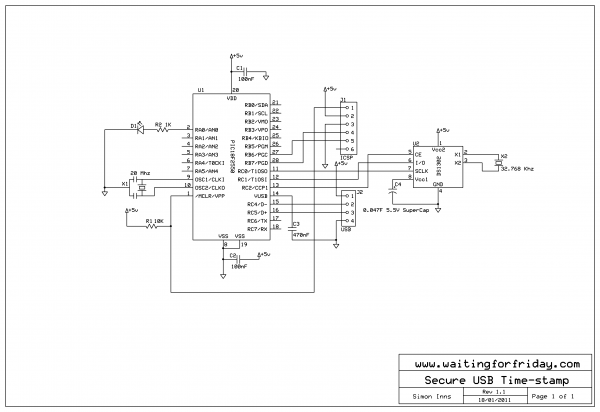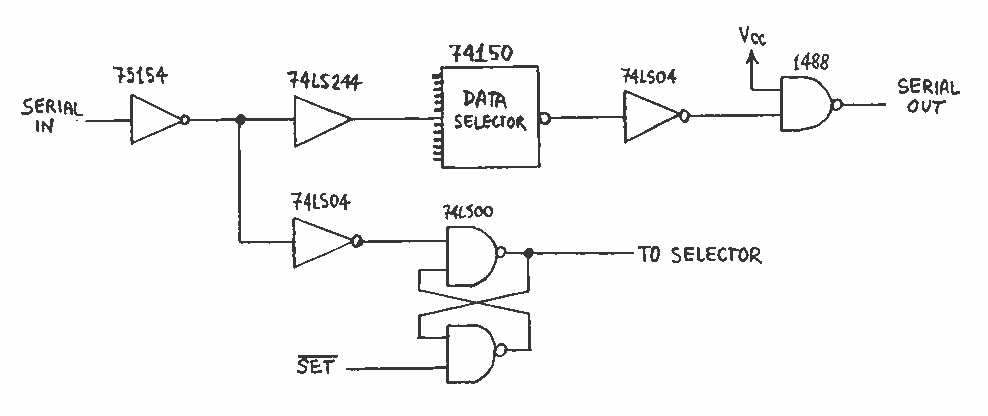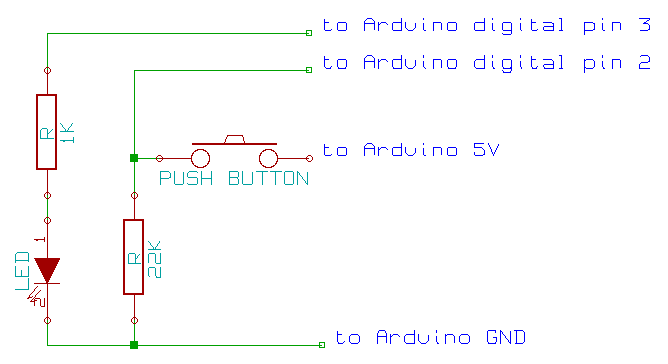
1-Chip 4-Channel PIC16F886 Data Logger
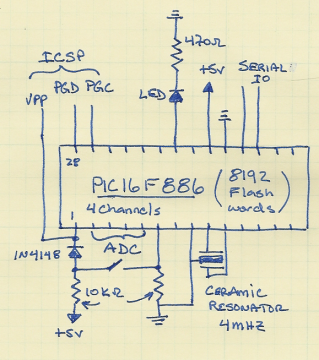
This project includes a few modifications from the Single Chip, Four Channel Datalogger article, so minimal detail will be provided. Below is the schematic. The changes from Dan's datalogger include the use of the PIC16F886, which is pin-compatible with the PIC16F876. Additionally, the hardware serial I/O channels of the PIC (pins 17 and 18) have been utilized, and an indicator LED has been added to show that logging is in progress, along with a log interval set by pin 22. A switch is incorporated to toggle between logging and writing data over the serial port. The C data logger code is available, along with a hex file for a 1-second log interval. The CCS compiler is employed, allowing straightforward reading and writing to program memory with commands such as write_program_eeprom(prog_mem_adr, value) and read_program_eeprom(prog_mem_adr). The PIC16F886 features 8192 total program flash words. The total logging duration is determined by the delay setting at line 64 of main.c. A frequency counter can be used at the indicator LED to set the desired logging interval. If no additional lines are added to the code, memory usage for logging can be increased by setting START_ADR to the lowest available memory address, which can be identified using the PICKit2 programming application or any preferred PIC programmer. The completed logger is shown with an LM35 temperature sensor (suspended in the foreground) and a 7805 regulator (located in the back left corner of the board), powered by a 9V battery.
The project utilizes the PIC16F886 microcontroller, which serves as the core of the data logging system. This microcontroller is chosen for its compatibility with the previous version (PIC16F876) while offering enhanced features. The schematic includes connections for the hardware serial I/O channels, specifically pins 17 (TX) and 18 (RX), which facilitate communication with external devices. The indicator LED is connected to a designated pin to visually indicate when data logging is active, providing real-time feedback to the user.
The switch integrated into the design allows for easy toggling between two operational modes: logging data and transmitting logged data over the serial port. This flexibility is crucial for applications where data needs to be reviewed or transferred to another system without reprogramming the device.
The software component of the project is developed using the CCS compiler, which simplifies the process of accessing program memory. The commands for reading and writing to EEPROM are user-friendly, enabling efficient data handling. The total program memory of 8192 words allows for substantial data logging capabilities, and the logging duration can be adjusted through the delay settings within the code, specifically at line 64 of main.c.
To determine the optimal logging interval, a frequency counter can be employed at the indicator LED. This method allows for precise adjustments to the logging frequency, ensuring that the data collection meets the specific needs of the application. Furthermore, by modifying the START_ADR to the lowest open memory address, users can maximize the available memory for logging without the need for extensive code alterations.
The physical assembly of the logger includes an LM35 temperature sensor, which is positioned to measure ambient temperature accurately. The 7805 voltage regulator ensures that the microcontroller and other components receive a stable 5V supply from the 9V battery, making the system portable and reliable for various logging applications. This combination of hardware and software provides a robust solution for data logging tasks in a wide range of environments.This project has only a few modifications from the Single Chip, Four Channel Datalogger article, so I won`t go into much detail. Below is the schematic. The changes from Dan`s datalogger are that I used the PIC16F886, which is pin-compatible with the PIC 16F876.
I also used the PI`s hardware serial I/O channels (pins 17 and 18) and I added Can indicator LED that indicates logging in progress and the log interval (pin 22). The switch sets the mode between logging and writing data over the serial port. The C data logger code is available here as is a hex file with 1 s log interval. I used the CCS compiler. This makes reading and writing program memory very straight forward with commands like write_program_eeprom( prog_mem_adr, value ) and read_program_eeprom(prog_mem_adr). The 16F886 has 8192 total program flash words. The total time of logging is determined by the delay setting at line 64 of main. c. Use a frequency counter at the indicator LED to set the desired logging interval. If you don`t add any lines to the code, you can increase the memory used for logging by setting START_ADR to the lowest open memory address.
You can get this information with, e. g. , the PICKit2 programming application or whatever your favorite PIC programmer provides. Here`s the completed logger with a LM35 temperature sensor (suspended in the foreground) and a 7805 regulator (on the back left corner of the board) with a 9V battery attached. 🔗 External reference
The project utilizes the PIC16F886 microcontroller, which serves as the core of the data logging system. This microcontroller is chosen for its compatibility with the previous version (PIC16F876) while offering enhanced features. The schematic includes connections for the hardware serial I/O channels, specifically pins 17 (TX) and 18 (RX), which facilitate communication with external devices. The indicator LED is connected to a designated pin to visually indicate when data logging is active, providing real-time feedback to the user.
The switch integrated into the design allows for easy toggling between two operational modes: logging data and transmitting logged data over the serial port. This flexibility is crucial for applications where data needs to be reviewed or transferred to another system without reprogramming the device.
The software component of the project is developed using the CCS compiler, which simplifies the process of accessing program memory. The commands for reading and writing to EEPROM are user-friendly, enabling efficient data handling. The total program memory of 8192 words allows for substantial data logging capabilities, and the logging duration can be adjusted through the delay settings within the code, specifically at line 64 of main.c.
To determine the optimal logging interval, a frequency counter can be employed at the indicator LED. This method allows for precise adjustments to the logging frequency, ensuring that the data collection meets the specific needs of the application. Furthermore, by modifying the START_ADR to the lowest open memory address, users can maximize the available memory for logging without the need for extensive code alterations.
The physical assembly of the logger includes an LM35 temperature sensor, which is positioned to measure ambient temperature accurately. The 7805 voltage regulator ensures that the microcontroller and other components receive a stable 5V supply from the 9V battery, making the system portable and reliable for various logging applications. This combination of hardware and software provides a robust solution for data logging tasks in a wide range of environments.This project has only a few modifications from the Single Chip, Four Channel Datalogger article, so I won`t go into much detail. Below is the schematic. The changes from Dan`s datalogger are that I used the PIC16F886, which is pin-compatible with the PIC 16F876.
I also used the PI`s hardware serial I/O channels (pins 17 and 18) and I added Can indicator LED that indicates logging in progress and the log interval (pin 22). The switch sets the mode between logging and writing data over the serial port. The C data logger code is available here as is a hex file with 1 s log interval. I used the CCS compiler. This makes reading and writing program memory very straight forward with commands like write_program_eeprom( prog_mem_adr, value ) and read_program_eeprom(prog_mem_adr). The 16F886 has 8192 total program flash words. The total time of logging is determined by the delay setting at line 64 of main. c. Use a frequency counter at the indicator LED to set the desired logging interval. If you don`t add any lines to the code, you can increase the memory used for logging by setting START_ADR to the lowest open memory address.
You can get this information with, e. g. , the PICKit2 programming application or whatever your favorite PIC programmer provides. Here`s the completed logger with a LM35 temperature sensor (suspended in the foreground) and a 7805 regulator (on the back left corner of the board) with a 9V battery attached. 🔗 External reference
